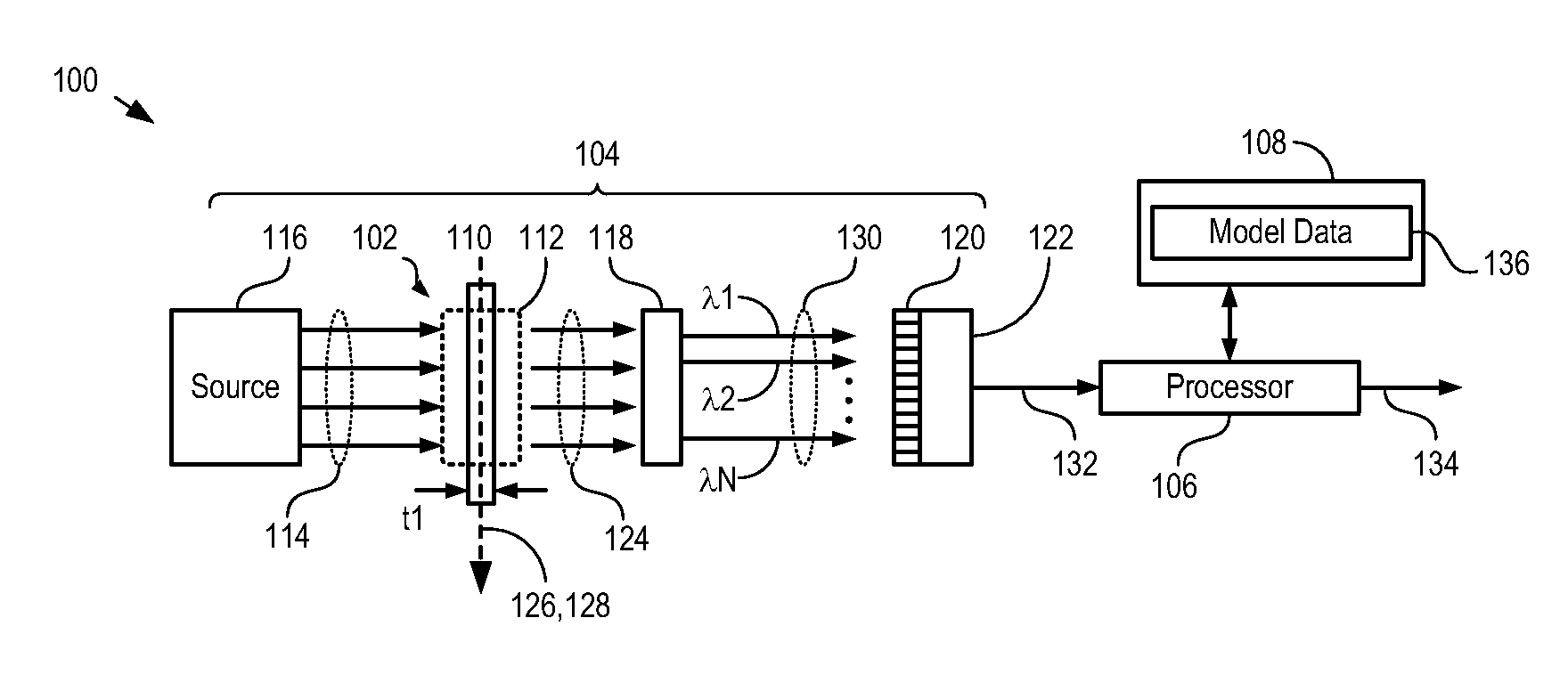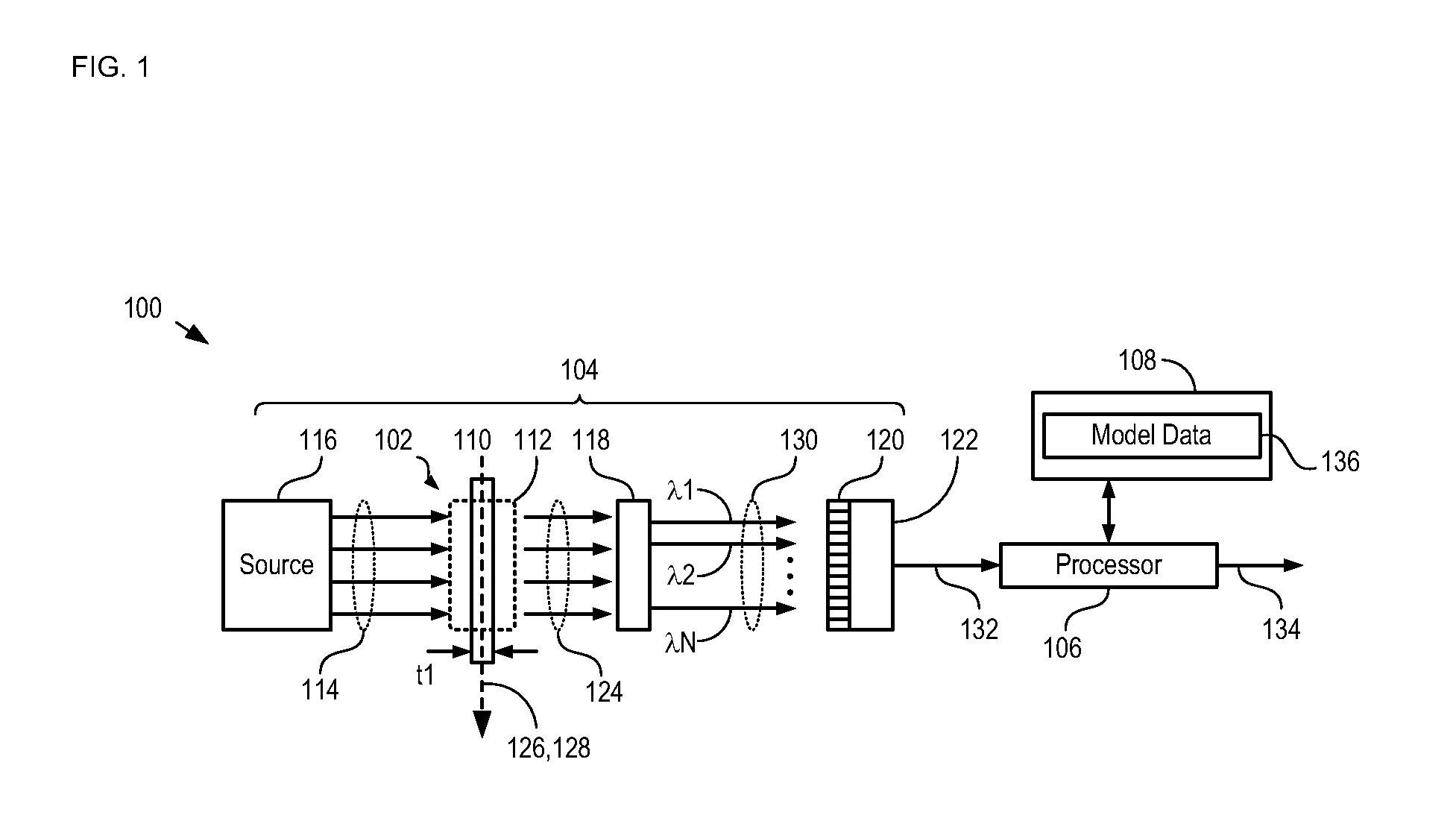Apparatus and Method for Detecting and Quantifying Analytes in Solution
- Summary
- Abstract
- Description
- Claims
- Application Information
AI Technical Summary
Benefits of technology
Problems solved by technology
Method used
Image
Examples
Embodiment Construction
[0029]The present invention enables rapid, high-confidence detection and quantification of low-concentration analytes in a background solvent. Some embodiments of the present invention are particularly well suited for medical applications and environmental testing applications, wherein analysis of analytes in a water-rich environment is desired. Other embodiments of the present invention are well suited to industrial, chemical, and petrochemical applications, wherein analysis of analytes in a background solvent other than water is desired.
[0030]The present invention enables remote sensing using mid-infrared spectrometry. Embodiments of the present invention are particularly well suited for use in such applications as remote diagnostic systems that can effectively and quickly detect and quantify analytes in a water-rich environment. Some embodiments, of the present invention enable interrogation of a sample using mid-infrared radiation conveyed to the sample site via optical fibers s...
PUM
 Login to View More
Login to View More Abstract
Description
Claims
Application Information
 Login to View More
Login to View More - R&D
- Intellectual Property
- Life Sciences
- Materials
- Tech Scout
- Unparalleled Data Quality
- Higher Quality Content
- 60% Fewer Hallucinations
Browse by: Latest US Patents, China's latest patents, Technical Efficacy Thesaurus, Application Domain, Technology Topic, Popular Technical Reports.
© 2025 PatSnap. All rights reserved.Legal|Privacy policy|Modern Slavery Act Transparency Statement|Sitemap|About US| Contact US: help@patsnap.com



